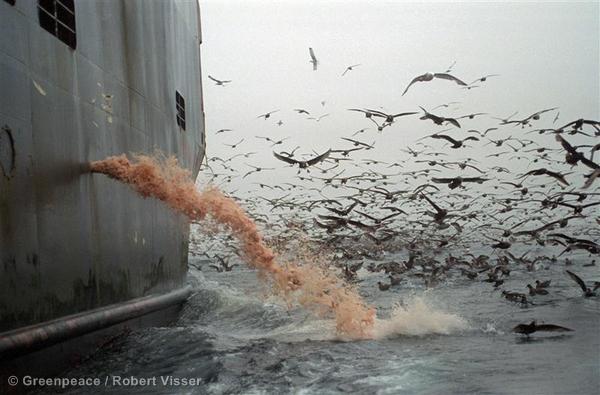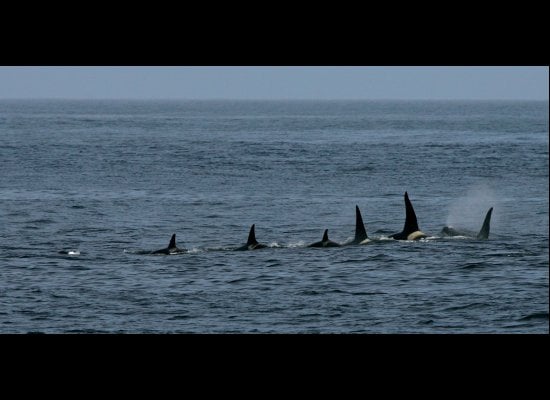When I was a boy, I would stand on the beaches of St. George Island, amazed by the wealth of life, both in the waters and on the lands of our small island. How could such a small land mass part of the Pribilof Islands of the Bering Sea attract such an abundance of wildlife, year after year?
As the seasons changed, I would wonder how those waters remained constant, continuing to sustain our little village with an incredible variety of foods. Large boats would appear on the horizon, never coming close to our village except to drop off injured workers seeking medical attention. Who are they and what are they doing? I would wonder, daydreaming of the lives of people elsewhere, in places unknown, breaking the peacefulness of my spirit?
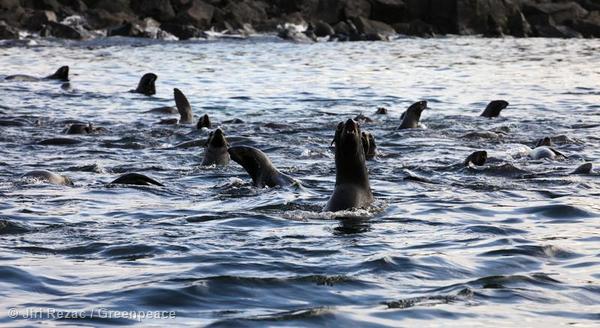
Young male Northern Fur Seals (Callorhinus Ursinus) frolic in the waters off the island of St. George in the Bering Sea, Alaska.
Of course, one matures, grows up. Innocent musings are replaced by critical thinking.
They were fishers, of course, come from far away to take from our waters.
Still, surely what they were doing could never exhaust the plenitude the waters provide for our people.
Even that assumption proved to be just musing. In my short lifetime, what we once thought was constant has dwindled.
Where once the seasonal king crab fishery lasted for months, now it is no more. As the tanner crab fishery took its place, the season once lasted from January to July. Now it rarely goes two months.
When once I could fish commercially for the abundant halibut, now we are only permitted to catch 44 tons, working just one month of the year to do this.
How could this have happened to the abundance I knew as a young man?
How could the two million fur seals that came home every spring now number 600,000? And what is happening to the birds? They must have numbered in the millions when I was young, far too many to count. Today we sample the numbers and see declines each year.
So big a change in just five decades.
Today as I travel back to my small home, a shell of what it once was, I hear cries from the people still living there: We need protections! But from what? Who is doing this and why is it happening so quickly?
While growing up I learned from some geologists about the closeness of the mouth of the mighty Yukon River, just north of St. Paul Island. It used to end just right there, pointing northwest from where we were standing. At the mouth of that river is a canyon so large that it is no doubt one of the greatest geological features on the planet. And it is filled with life, or once was. Could that be the answer to our questions about the declines of our foods in our waters?
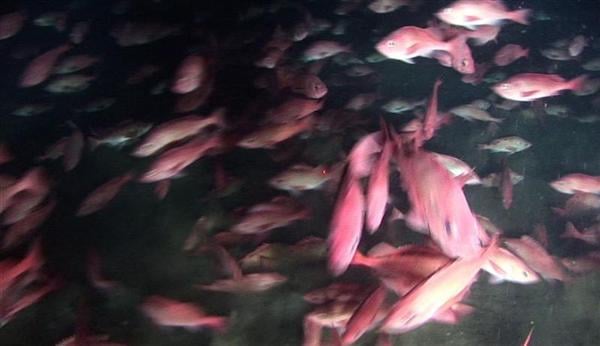
A school of Pacific Ocean perch surround a manned deep submersible during undersea research of Pribilof Canyon in the Bering Sea.
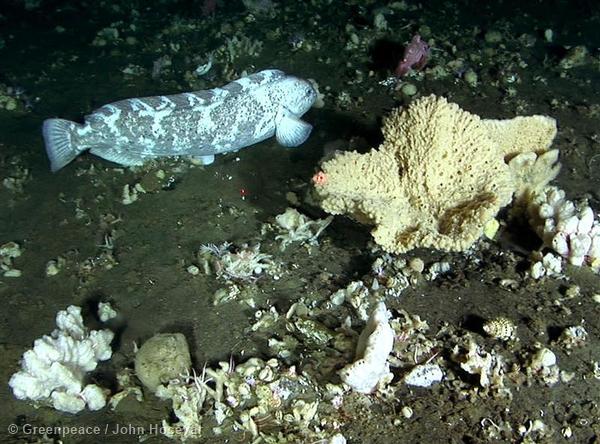
A prowfish, as well as soft corals and sponges, as viewed by a manned deep submersible approximately 1000′ deep during undersea research of Pribilof Canyon.
That canyon is Pribilof Canyon, and along with nearby Zhemchug Canyon, it makes up one of the great sources of the abundant life of the Bering Sea. We at Greenpeace, along with our friends among the tribes of Alaska, have been trying to get the North Pacific Fishery Management Council (NPFMC) to develop alternatives to its current means of managing the commercial activities in the Bering Sea for several years. Among our hopes was that the Council would understand the vitality of those canyons and place widespread protections on them.
Sadly, just last month the Council failed to do so, taking Zhemchug Canyon off the table. The Council did not even consider any protections for the coral and sponges destroyed during fishing activities. It seems we have lost an opportunity to finally have protections for the waters and foods we have depended upon for years. Instead, the big money of the large industrial commercial fishers of Washington State has won out.
Although NPFMC has the most say around here, not all authority disregards our waters and its sources of life. After years of talk, debate, conjecture, and hope, we recently joined forces with the Alaska Federation of Natives (AFN), made up of the 13 Regional Corporations, 225 Village Corporations, 13 Regional Nonprofit Corporations, and 229 Tribal Governments of Alaska.
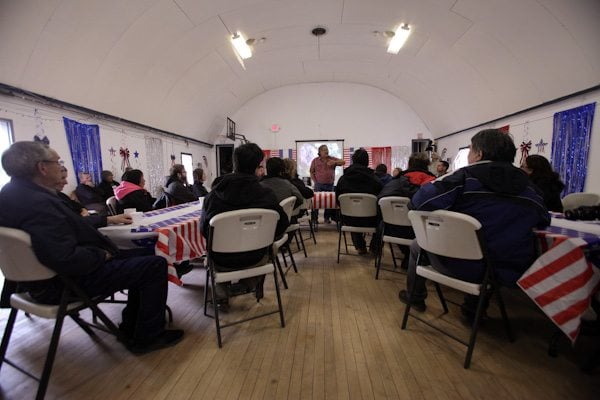
George Pletnikoff speaks at a community meeting on St. George Island, Bering Sea Alaska. Photo: Greenpeace/Jiri Rezac
Organized by some honorable leadership of our people, giants in our day, we went to the AFN seek protections from overfishing, from trawlers who destroy the benthic habitat by dragging the oceans bottom to pieces, to regain the abundance of life our waters once had.
And they did not disappoint.
I drafted this language as an amendment to a larger resolution be introduced on the floor of the Convention:
BE IT FINALLY RESOLVED that there be protections for both Zhemchug and Pribilof Canyons, two of the largest underwater canyons in the World and that they be set aside as protected areas from further destruction and habitat degradation.
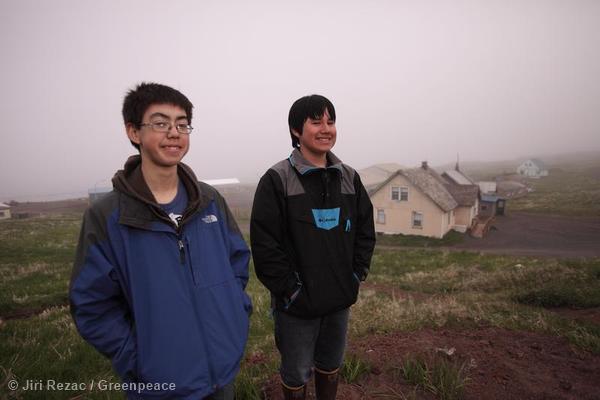
Locals Anthony C. Lekanof (L) and William. T. S. Lekanof pose for a portrait on the island of St. George in the Bering Sea.
The Convention passed it unanimously. Finally, we had a sliver of hope for the return of wildlife to our small island and the protection of small but important areas in our waters.
But who knows what effect it will have?
People all along the Bering Sea coast of Alaska are still working tirelessly to accomplish this goal. People and organizations of like mind have come to assist us in this critical and important work. My hope is that another young boy or girl living on St. George Island will dream and hope that one day the stories heard from their parents and grandparents will come to be true again, that the waters and land will once again contain an abundance of nature in her wildlife. We are the first protectors.


